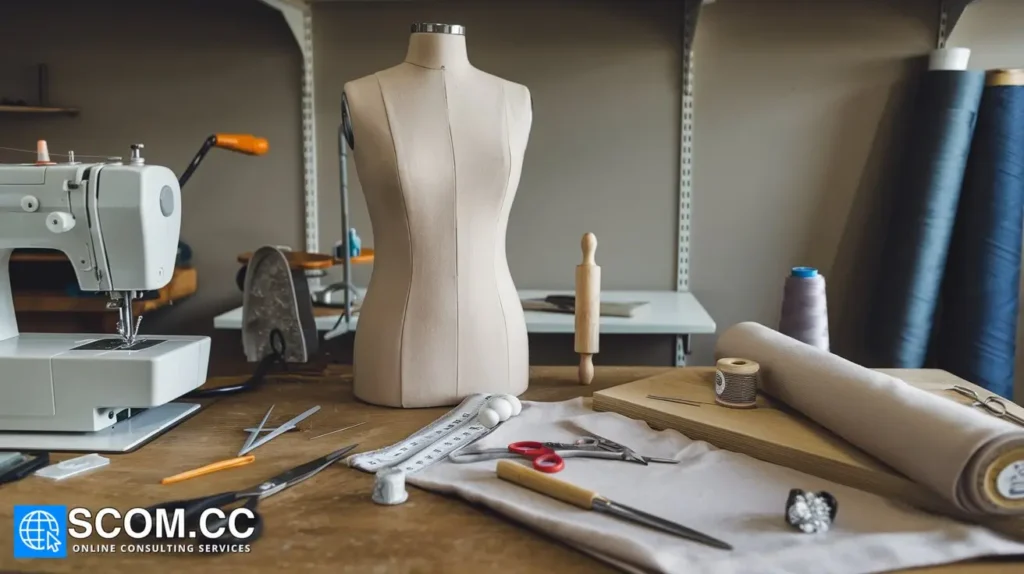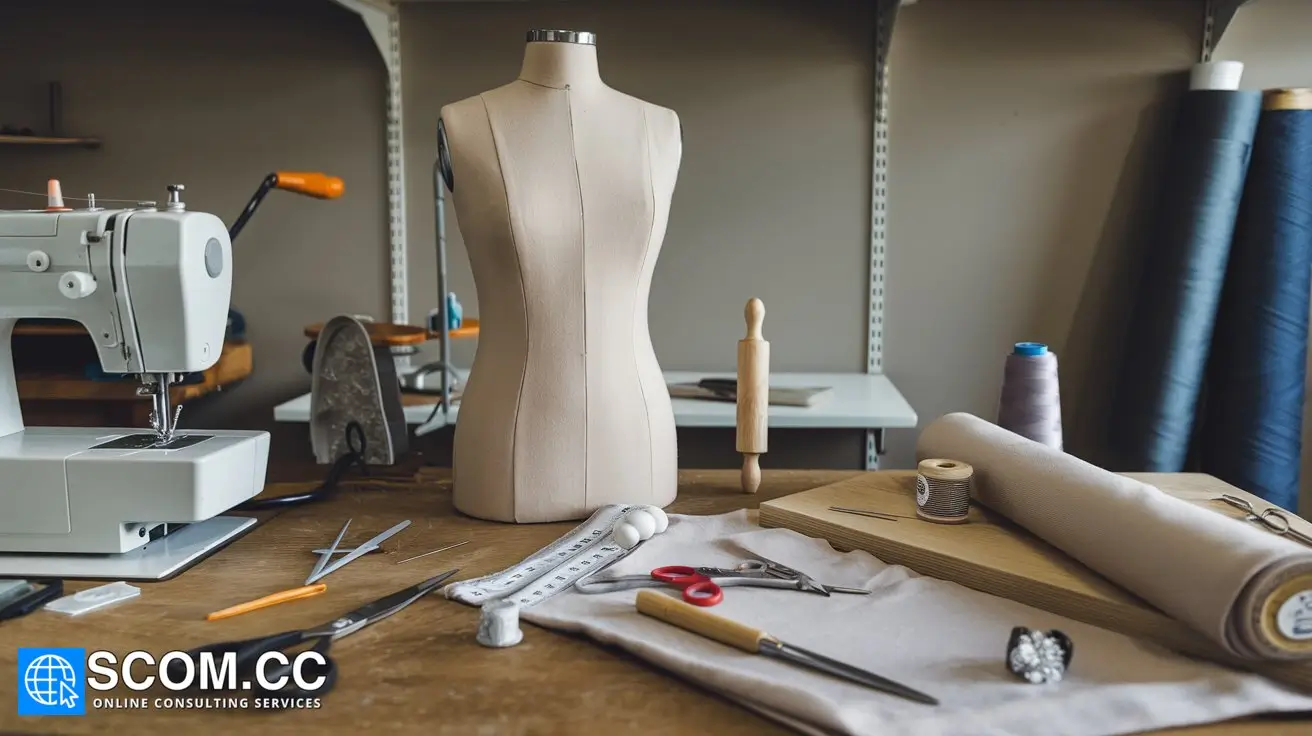How to Organize Your Tailoring Workspace Efficiently

How to Organize Your Tailoring Workspace Efficiently
An efficiently organized tailoring workspace can significantly enhance productivity, streamline operations, and ensure a seamless tailoring process. Whether you're a professional tailor or a dedicated hobbyist, having a well-organized workspace is crucial for maintaining focus, reducing errors, and maximizing creativity. This guide offers practical tips and strategies for organizing your tailoring workspace to create an environment that fosters efficiency and supports your tailoring projects.
1. Designing the Layout
1.1 Assess Your Space
Before setting up your workspace, assess the available space and determine how much room you have for various tasks and equipment.
- Space Planning: Measure the dimensions of your workspace and identify areas for different functions, such as cutting, sewing, and storage.
- Ergonomics: Ensure that your workspace design promotes comfort and efficiency, with adequate room for movement and easy access to essential tools.
1.2 Define Work Zones
Designate specific areas for different tasks to keep your workspace organized and functional.
- Cutting Zone: Allocate a large, flat surface for cutting fabric. Ensure it is well-lit and has ample space for spreading out materials.
- Sewing Zone: Position your sewing machine and related equipment in a dedicated area where you can work comfortably without distractions.
- Pressing Zone: Set up an area with an ironing board and press for finishing garments, ideally near your sewing zone for convenience.
2. Storage Solutions
2.1 Shelving and Cabinets
Invest in shelving units and cabinets to keep your tools and supplies neatly organized.
- Shelving Units: Use open shelves to store frequently used items, such as fabrics, patterns, and notions. Adjustable shelves allow for flexible storage options.
- Cabinets: Closed cabinets help keep your workspace clutter-free by storing items like threads, needles, and patterns out of sight.
2.2 Drawers and Bins
Drawers and bins are essential for organizing smaller items and keeping your workspace tidy.
- Drawer Organizers: Use drawer inserts to separate and categorize sewing supplies like pins, buttons, and zippers.
- Storage Bins: Label bins for different categories of materials, such as fabric remnants, interfacing, and sewing accessories.
2.3 Wall Storage
Utilize wall-mounted storage solutions to maximize vertical space and keep essential tools within easy reach.
- Pegboards: Install pegboards to hang tools, scissors, and other frequently used items. This keeps them visible and accessible.
- Shelving Racks: Wall-mounted shelves or racks can hold fabric bolts, patterns, and other materials, freeing up desk and table space.
3. Tool Organization
3.1 Sewing Machine and Accessories
Ensure that your sewing machine and its accessories are organized and readily accessible.
- Machine Placement: Position your sewing machine on a stable, dedicated table to prevent vibrations and ensure smooth operation.
- Accessory Storage: Use a designated drawer or caddy for sewing machine accessories like presser feet, bobbins, and needles.
3.2 Cutting Tools
Organize cutting tools to facilitate efficient fabric cutting and minimize interruptions.
- Tool Holders: Use wall-mounted or tabletop tool holders to keep rotary cutters, scissors, and rulers organized and within reach.
- Cutting Mats: Store cutting mats flat or rolled to prevent warping and ensure they are ready for use.
3.3 Pattern Storage
Properly store patterns to keep them in good condition and easily accessible.
- Pattern Files: Use file folders or binders to organize and store patterns by type or project. Label each folder for easy identification.
- Pattern Racks: Install a pattern rack or use a hanging organizer to keep patterns visible and prevent them from becoming wrinkled or damaged.
4. Workflow Optimization
4.1 Streamline Processes
Streamlining your workflow can help improve efficiency and reduce time spent searching for tools or materials.
- Task Sequencing: Arrange your workspace to follow the natural sequence of tailoring tasks, from cutting to sewing to pressing. This minimizes movement and keeps everything in order.
- Pre-Planning: Plan your projects in advance and gather all necessary materials and tools before starting to ensure a smooth workflow.
4.2 Regular Maintenance
Regularly maintain and tidy your workspace to keep it organized and functional.
- Daily Clean-Up: Spend a few minutes each day organizing and putting away tools and materials to prevent clutter from accumulating.
- Weekly Review: Perform a more thorough review of your workspace each week, addressing any issues and reorganizing as needed.
5. Enhancing Comfort and Efficiency
5.1 Lighting
Good lighting is essential for accurate work and reducing eye strain.
- Task Lighting: Use adjustable task lights at your sewing and cutting areas to ensure adequate illumination and reduce shadows.
- Ambient Lighting: Provide general lighting to brighten the entire workspace, making it easier to see and work comfortably.
5.2 Seating and Ergonomics
Comfortable seating and ergonomic design can improve your productivity and reduce fatigue.
- Ergonomic Chair: Invest in a comfortable, adjustable chair with good lumbar support to provide proper posture and reduce strain during long sewing sessions.
- Work Surface Height: Ensure that your work surfaces are at the correct height to prevent awkward bending or reaching, which can lead to discomfort.
6. Personal Touches
6.1 Decor and Inspiration
Add personal touches to your workspace to create an inspiring and enjoyable environment.
- Decorative Elements: Incorporate elements that reflect your style and creativity, such as artwork, fabric swatches, or sewing-themed decorations.
- Inspirational Space: Create a dedicated area for displaying inspirational items, such as sketches, fabric samples, or design ideas.
Conclusion
An efficiently organized tailoring workspace is essential for maximizing productivity, ensuring accuracy, and enhancing your overall sewing experience. By thoughtfully designing your layout, investing in effective storage solutions, and optimizing your workflow, you can create a functional and comfortable environment that supports your tailoring projects. Regular maintenance and personal touches will further contribute to a workspace that is both practical and enjoyable.

To explore more about tailoring, visit our Blog of Tailoring. If you have any questions or need assistance, go to our contact page. Additionally, you can find more information about tailoring and consulting at this tailoring and consulting portal.

Leave a Reply